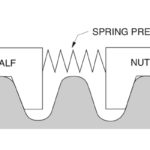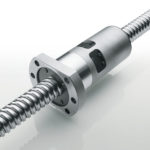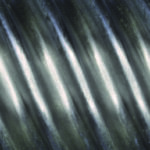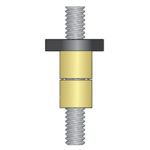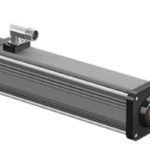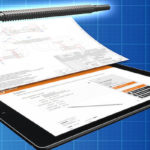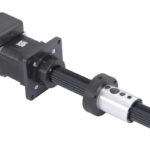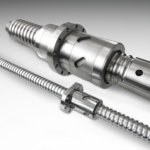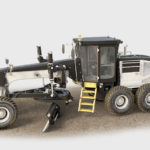Backlash is an inherent property of lead screw assemblies due to the sliding motion between the screw and the nut. For some applications, a certain amount of backlash, or “play,” can be tolerated, but applications such as positioning, dispensing, or assembly often require a level of precision and repeatability that can’t be achieved if backlash […]
Ball + leadscrew driven
Ball screws feature high speed, high load capacity for machine tool applications
Featuring high-speed performance and load capacities that exceed existing full ball standards, THK’s new Type BSM ball screw is ideal for use in machine tools. The Type BSM uses a newly developed circulation structure and a large lead to meet high-speed performance demands. The DN value is 170,000, contrasted with 130,000 in conventional products. The […]
Linear motion systems: Only as strong as weakest link
Demands placed on linear systems in today’s automation are greater than ever — and continue to increase. Here we review five links in the chain of design elements so critical to precision operation. By Mark Huebner • Mechatronics global product manager | PBC Linear Kevin Bischel • Principal engineer | PBC Linear A linear motion […]
What is a follower nut, and what role does it play in lead screw operation?
Although the idea of a “follower nut” may seem to indicate that the nut serves a passive role in lead screw operation, it actually plays an important part in monitoring the condition and life of the screw assembly. The wear characteristics of a lead screw nut make the expected service life of the assembly difficult […]
New Thomson video shows customer’s use of electric actuator synchronization option
Thomson Industries, Inc., a leading manufacturer of linear motion control solutions, has released a video showing how the synchronization feature available with its Electrak HD electromechanical linear actuators helped Spika Design and Manufacturing address a growing customer demand. Spika is a Montana-based provider of commercial and custom industrial work platforms suitable for a wide variety of […]
Which type of linear actuator is best for thrust forces?
When an application requires pure thrust forces, the best type of linear actuator is often a rod-style actuator. Also referred to as thrust actuators and (when a motor is integrated) electric actuators, these electromechanical devices excel at providing axial, or thrust, forces for pushing, pulling, or holding loads. Although their function is straightforward, thrust actuators […]
New lead screw configurator from igus allows for quick design
igus has developed a new lead screw configurator that allows users to quickly design their own lead screw and associated drawing without in-depth technical knowledge and CAD software. Designing a lead screw usually requires significant effort for the user, who is required to have technical drawing skills and access to a CAD program. The new […]
Motion Trends: Applications expand for versatile lead screws
Improvements in lead screw designs have meant screws that are increasingly competitive with other types of drive screws, including ball screws. For instance, lead screws can offer shorter lead times and better performance, all at a lower cost than other screw technologies. Quite a few lead screw manufacturers offer a range of anti-backlash options, superior […]
Motion Trends: Ball screws pack more load capacity
Continued developments in manufacturing and materials have improved ball screw performance, with the most recent generation of ball screws having greater load densities than ever before, leading to higher load capacities. High-load ball screws are being integrated into electromechanical linear actuator systems for use in applications with higher loads and more demanding environmental conditions. In […]
Application example: Ladders on construction machinery use actuators for better ergonomics
90% of small U.S. construction companies have safety programs, but only a third have programs to improve the ergonomics of workers’ environments. It’s too bad, because the risk of musculoskeletal disorders (MSDs) is especially high in construction workers. Plus annual wage and salary losses are estimated at $46 million for the U.S. private-construction sector. Workers […]

